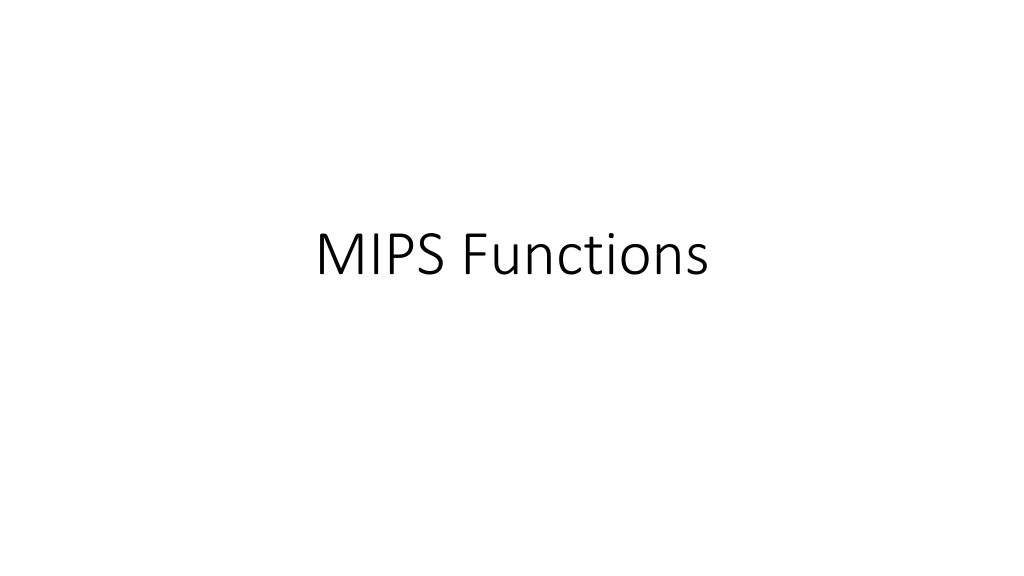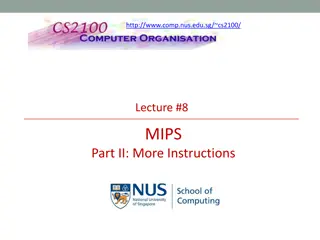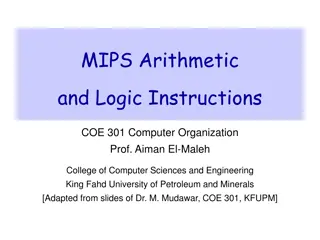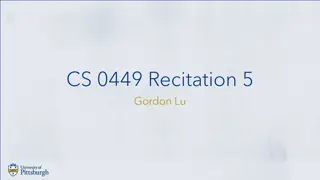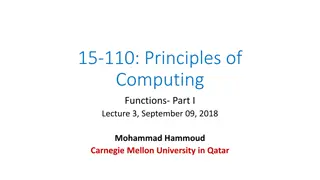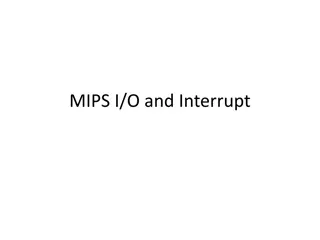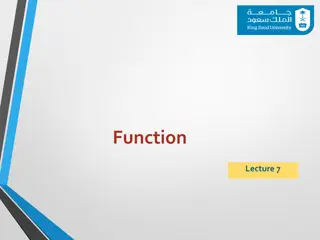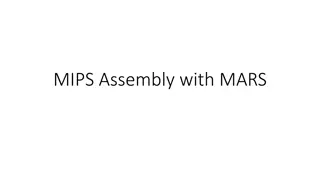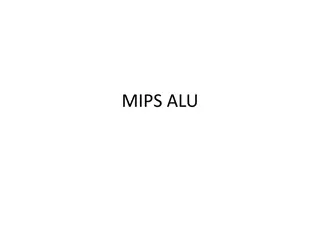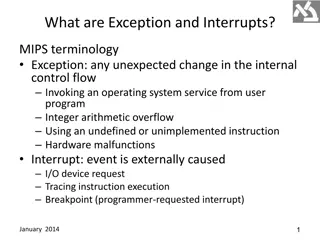MIPS Functions and Calling Conventions
MIPS functions in assembly language are called using the 'jal' instruction, passing arguments in specific registers. Functions must end with 'jr $ra' and have explicit declarations. MIPS functions are stored separately from the main function in memory. The 'jal' instruction jumps to a specified address and saves the return address. Parameters are passed using specific registers following MIPS calling conventions.
Download Presentation

Please find below an Image/Link to download the presentation.
The content on the website is provided AS IS for your information and personal use only. It may not be sold, licensed, or shared on other websites without obtaining consent from the author.If you encounter any issues during the download, it is possible that the publisher has removed the file from their server.
You are allowed to download the files provided on this website for personal or commercial use, subject to the condition that they are used lawfully. All files are the property of their respective owners.
The content on the website is provided AS IS for your information and personal use only. It may not be sold, licensed, or shared on other websites without obtaining consent from the author.
E N D
Presentation Transcript
Questions A MIPS function is called by the jal instruction, which does two things: 1) going to the address of the first instruction in the function, 2) passing the arguments in $a0 to $a3.
Questions A MIPS function must be ended by the jr $ra instruction.
Questions MIPS functions are stored in a different part in the memory and not in the same part as the main function.
Questions A MIPS function has explicitly declare a name along with the list of arguments to be passed to it, including the names and the types.
Questions A function in MIPS cannot have loops.
Questions In MIPS, the name of a function is a special data type.
Questions The jal L1 instruction jumps to L1, and saves the address of L1 into $ra.
Questions Suppose $s0, $v0, and $a0 are holding 60, 0, and 35, respectively. After the program executes till p9L2, what will be the value in $v0? jal p9L1 j p9L2 p9L1: add $v0, $v0, $a0 blt $v0, $s0, p9L1 jr $ra p9L2: (a) 100 (b) 70 (c) The program will never run to p9L2. (d) None of the above.
MIPS Calling Conventions MIPS assembly follows the following convention in using registers $a0 - $a3: four argument registers in which to pass parameters $v0 - $v1: two value registers in which to return values $ra: one return address register to return to the point of origin 9/27/2024 week04-3.ppt 11
MIPS Conventions Quite often, our function needs to use some registers to do dome calculation. So we will modify the values of them. We can use $t0-$t9 freely inside a function, because the caller does not expect the values inside $t0-$t9 to stay the same after the function call. But, the caller do expect the values in $s0 to $s7 to be the same after a function call.
MIPS Conventions So, just try to avoid using $s0 and $s7 inside a function whenever possible. But what if do need it? Such occasions will arise
Stack So, if we do have to use $s0 - $s7, we MUST save it somewhere before entering the main part of the function, and restore it before we return (before we execute jr $ra ). In MIPS, we save them in the stack. Stack is a part in the memory allocated for functions. It starts at 0x7ffffffc and grows down as we add more stuffs to it. Stack is first in last out.
$sp The top address of the stack, the address of the first word that is storing value, is (should be) always stored in $sp. So, adding a word into the stack (pushing a word onto the stack) is a two-step thing, because you have to maintain the correctness of $sp: addi $sp, $sp, -4 sw $s0, 0($sp)
Stack and $sp Suppose we want to store a/2 in $s0. How do we get a/2? At the beginning, we do addi $sp, $sp, -4 sw $s0, 0($sp) At the end, we do lw $s0, 0($sp) addi $sp, $sp, 4
.data .word 12, 34, 67, 1, 45, 90, 11, 33, 67, 19 A: main: loop: .text .globl main la $s7, A li $s0, 0 #i li $s1, 0 #res li $s6, 9 sll $t0, $s0, 2 add $t0, $t0, $s7 lw $a0, 0($t0) lw $a1, 4($t0) jal weirdfun add $s1, $s1, $v0 addi $s0, $s0, 2 blt $s0, $s6, loop done: weirdfun: li $v0,10 syscall addi $sp, $sp, -4 sw $s0, 0($sp) srl $s0, $a0, 1 add $t0, $a0, $a0 add $t0, $t0, $a1 sub $t0, $t0, $s0 ori $v0, $t0, 0 lw $s0, 0($sp) addi $sp, $sp, 4 jr $ra
